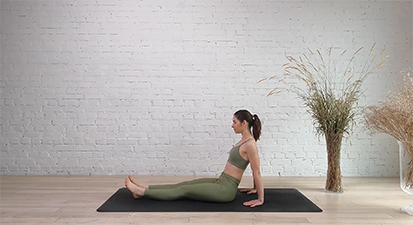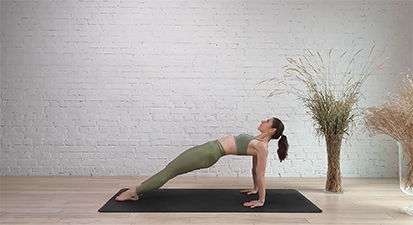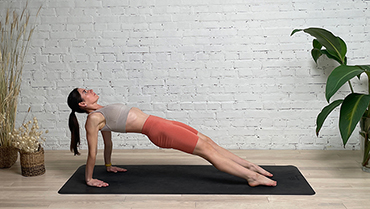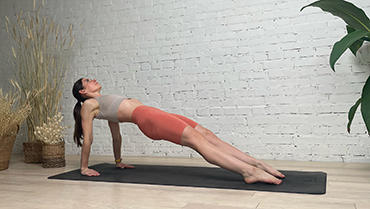Upward Plank Pose - Purva Uttanasana

Contents
Upward Plank Pose or Purva Uttanasana in Sanskrit (‘purva’ = ‘east’, ‘ut tan’ = ‘intense stretch’ and ‘asana’ = ‘posture’) is a yoga pose that strengthens and stretches the entire body, particularly the wrists, arms, shoulders, spine, and legs.
In yogic language, the front part of the body, from the tips of the toes to the crown of the head, is considered the east. Hence, in Upward Plank Pose (Purva Uttanasana or East Intense Stretch Posture in other words), the entire front portion of the body is stretched to the maximum in a slight back bend. It is just the opposite side of the body which is stretched and hence related to the Plank Pose.
This pose is generally practiced after Paschimottanasana. Upward Plank Pose is considered a base pose as upward plank pose variations can be derived from this pose. Upward Plank Pose helps boost energy in the body and hence can be included in flow yoga sequences.
Pose Detail
- Body Position: Arm & Leg Support
- By Type: Balancing Yoga Poses, Chest Opening Yoga Poses, Shoulder Opening Yoga Poses, Strengthening Yoga Poses
- Difficulty: Intermediate
- By Benefit: Yoga Poses For Stress Relief, Yoga Poses For Weight Loss
Step-by-Step Instructions




Benefits and Contraindications
Strengthens the arms, wrists and legs
Stretches the shoulders, chest, and front ankles
Wrist injury
With a neck injury, support the head on a wall or chair seat
Photo poses in different angles


Tips
If you find this too challenging, bend your knees and lift up into a reverse tabletop. Find a hand position that suits your shoulders: fingers point forward or away from you. Engage your gluteus muscles (buttocks) to support you in this pose.
Be mindful of your neck – if there are any injuries or existing weaknesses in your neck, keep your chin to your chest. Keep your wrists directly under your shoulders in this pose.
Try moving dynamically between Purvottanasana and Dandasana a few times – creating a swinging action. Keep pressing through the hands so your hips remain off the floor in Dandasana. You can also place your hands on blocks for this variation.
Frequently Asked Questions
Modifications & Variations
- One-Legged Upward Plank Pose
- Upward Plank Pose Aerial
- One-Arm Upward Plank Pose
- Forearm Upward Plank Pose
- Double Upward Plank Pose Feet Shoulders Partner
- Upward Plank Pose One Leg Raised Wheel
- Upward Plank Pose Hands Chair
- Reverse Table Top Pose Legs In Figure Four
- Upward Plank Pose Foot On Knee